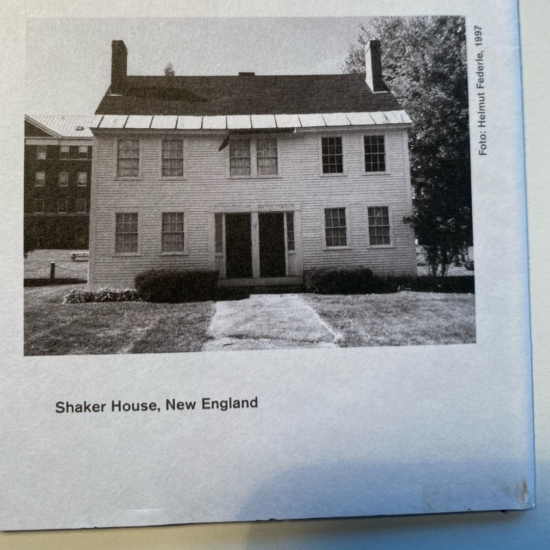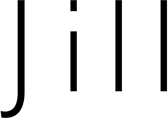
A WALK IN MY LIBRARY:
DECEMBER 31, 2020
JASON BUTLER'S EXHIBITION
Meyer Schapiro, “Theory and Philosophy of Art: Style, Artist and Society

BEHIND THE SCENES:
LIOR GALL, BRUSSELS, 2020
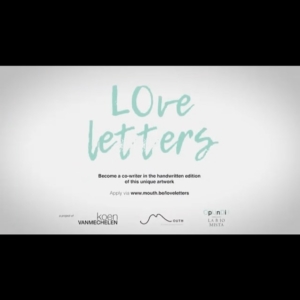
HIGHLIGHT:
LOVE LETTERS
A new participative project by artist Koen Vanmechelen

BEHIND THE SCENES:
LINDA KARSHAN AND THE BROOKLYN RAIL

BEHIND THE SCENES:
NOVEMBER 2020, LINDA KARSHAN
The Covid Conversation, A New Film
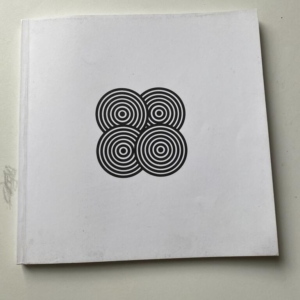
A WALK IN MY LIBRARY:
PARIS, NOV. 6, 2020
ABËTËI by Ishmael Fiifi Annobil

BEHIND THE SCENES:
MATHILDE BRETILLOT
Designs new offices for Parfums de Marly, Paris

BEHIND THE SCENES:
BERLIN STUDIO VISIT - LUKAS HOFFMANN

BEHIND THE SCENES:
BERLIN

BEHIND THE SCENES:
GALERIE NÄCHST ST. STEPHAN ROSEMARIE SCHWARZWÄLDER, VIENNA
Friederike Mayröcker, Curator Hans Ulrich Obrist - until 10 Oct
Schutzgeister/Guardian Spirits
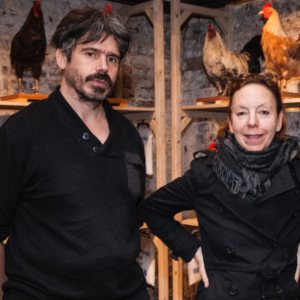
BEHIND THE SCENES:
JSVCPROJECTS AND KOEN VANMECHELEN
The Battery Channel Podcast

BEHIND THE SCENES:
ARTISTS IN THE STUDIO, JERSEY
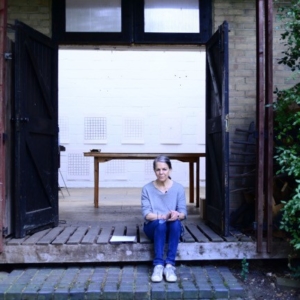
BEHIND THE SCENES:
MANIFEST OF THE TRUE

A WALK IN MY LIBRARY:
3 LOVE POEMS IN THE SUMMER

BEHIND THE SCENES:
SUMMER NEWS

BEHIND THE SCENES:
ROD MENGHAM,
Awarded the Cholmondeley Award for Poets

BEHIND THE SCENES:
JILL SILVERMAN VAN COENEGRACHTS RECOMMENDS

BEHIND THE SCENES:
LINDA KARSHAN
Studio visit

BEHIND THE SCENES:
STEFANO CIGADA,
"Frammenti" at the Museo di Roma in Trastevere

HAPPY NEW YEAR 2020!

A WALK IN MY LIBRARY:
HELMUT FEDERLE NIETZSCHE-HAUS SILS-MARIA
Schwabe AG Basel, 2004 Peter André Bloch & Jan Thorn-Prikker
on the occasion of Helmut Federle’s “Edelweiss im Nietzsche-Haus, Sils-Maria” exhibition in Nietzsche’s Haus, Sept 2004 to July 2005
June 18th 2021

PART I
I was very excited when this small book arrived in the last days of the confinement. It was among a cache I had ordered in the depths of the third lockdown one afternoon when everything seemed so bleak, my mood especially dark. I was looking for something to take me away from myself, as books can. Sitting at the computer, I hunted on Abe’s Books for anything on Helmut Federle that I didn’t already have in my bookcase. Voilà, this small volume that I ordered with a click and forgot about until it arrived many weeks later like a missive from a higher place. I opened the front cover and discovered it was signed by the artist in 2004.
It has lived on my table here waiting for a moment when I could do more than turn pages and look at images of works and installations from museum shows I had since researched again. It was inspiring to see a photograph of his exhibition in Nantes in 2002, an exhibition with a catalogue that I have not been able to find, no matter how hard I try, so it was an added bonus to see the black and white photograph of a thick white column with a painting to the left and a viewer passing by.
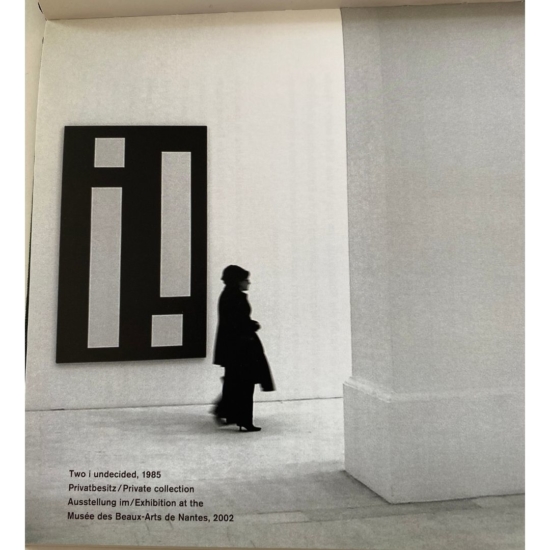
This is a thin hardcover book of 63 pages, in German and English, with a dust jacket that shows a photograph of Nietzsche-Haus on the cover and on the inside back flap a photograph of another similar building, but it is a Shaker House in New England of similar proportions taken by the artist in 1997.There are two accompanying texts by Peter Andre Bloch and Jan Thorn-Prikker. Bloch tells us in his introduction how important Sils-Maria was to Nietzsche, that he had his late great period in a room rented from a family writing and taking daily walks. It was here he conjured his theory of the eternal return inspired perhaps by the relationship between Sils-Maria and Surlej.
PART II
“Nietzsche as a writer and thinker strove for the conscious relativization of all possibilities of perception and the departure from this in absolute formulation. As a painter, Federle searches for the honest autonomy of the symbolic, consciously reducing applications of media, thus minimizing that which is to be seen in his work he carefully explores the symbolic representations of mystical and psychological projections. — In ever new approaches he transforms exterior images into art objects: through the mediation on the tension between picturality and transparency, drawing composition and painterly sensuality with the aim of merging incongruous opposites.”

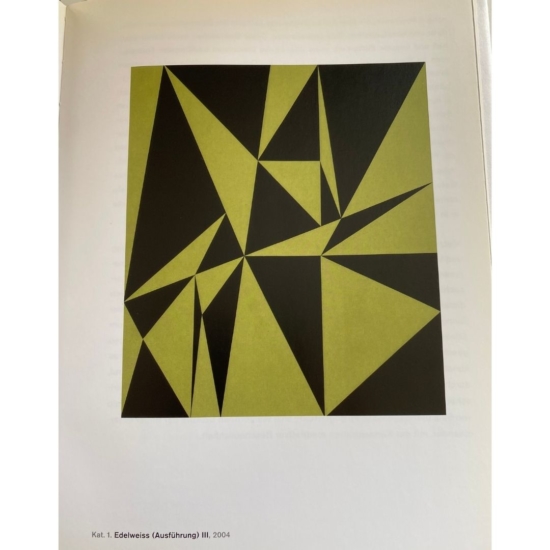
So we begin to see a series of strident paintings and works on paper, exhibition photographs and images from his early sketch books all of which offer a kind of landscape of art making that is in some ways parallel and not to Nietzsche’s writings. Any direct connection is not the point. Both were looking at what the most eloquent, reduced, sense of something could be, and then how it functions in a deliberate artistic or philosophical construct. This is pointed out again by Bloch in no uncertain terms, when he suggests that “in a post-modern departure from European nihilism he takes his own – ideologically critical – positions that partially tie in with Nietzsche’s aesthetic of the deconstruction of decadence and consumerism.”

Maybe now you see how the Shaker house fits. It is this metaphoric structure, this philosophical prospection inside formalism that Federle shares with the writer, which lead us to his iconic Edelweiss paintings, tight spiky formal bursts of acid yellow/green and black, Thorn Prikker suggests this painting shows a kind of instinctive intelligence, another form of thinking. A value per se, every image an ultimate image, he writes, “Also (and particularly) in a world without metaphysics and without God, the heroic meaninglessness of paintings points towards something that is more than themselves.”

PART III
Particularly resonant after the last eighteen months, without metaphysics and without God; have always felt Federle’s paintings were animate, energy centers that possessed qualities we recognized as they made their way towards us. This force was both magic and mystery compressed onto canvas, camouflaged as European minimalism, but there was nothing minimalist about it. It referenced ambiguous ritualistic meanings superimposed like strata, Thorn Prikker continues. “We do not believe that truth remains truth when the veil is torn away. There is no naked truth of things,” is how Nietzsche one described a similar problem.

How does this take us further towards understanding the anarchy of form, “as if any question about modernism were wrongly posed, as if in the realm of aesthetics there were only important or unimportant art and nothing in between.” Not surprising in this, he suggests the artist a concept of beauty, “simultaneously full of both sadness and subdued ardour, something floating and imprecise which leaves space for conjecture. As if my brain were an enchanted mirror of imagining for myself a form of beauty where unhappiness does not also receive expression.” (Baudelaire)

Interestingly, neither Nietzsche or Federle are particularly touched by this kind of wave of thought. Both are looking for the underbelly of everything as a state or condition that is luminous and at the same time dark, that recognizes the fragility of the point where these two phases meet. To consider the power inside the notion of the eternal return and then reflect on the condition we find held fugitive inside Federle’s works there may be a palpable sense of empathic connection through a condition of time and essential forces at play that are ever present and unspoken.
